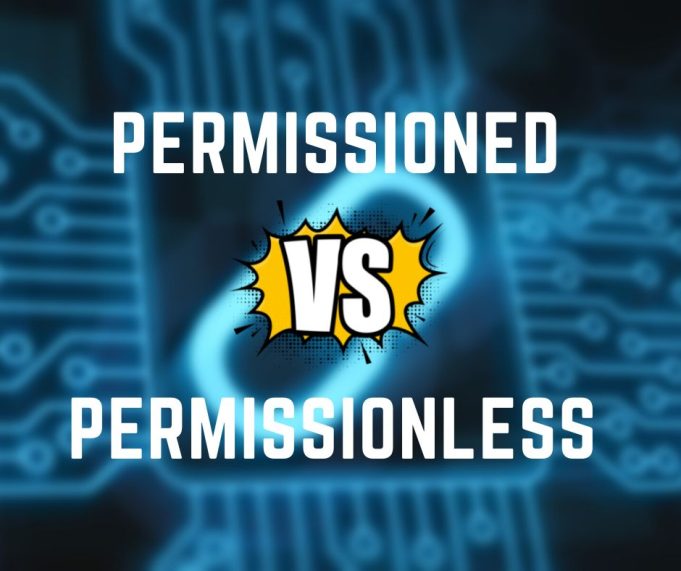The world of blockchain technology continues to expand, evolving both its uses and characteristics. Most notably, the difference between a “permissioned” blockchain and a “permissionless” one should be easy to grasp. By access and consensus differences, these two types of blockchains can potentially offer different advantages and drawbacks.
Permissionless blockchains are open to anyone, allowing people to join in the consensus mechanisms, provided that certain requirements are met. Leading examples of permissionless blockchains include Bitcoin, Ethereum and BNB Chain. As decentralized, transparent networks, they are free to join and use.
Contrastingly, permissioned blockchains require invitations to join. If you want to be part of this network, you’ll need for someone in charge to grant you access. These blockchains are usually made as private enterprise frameworks. As such, power is restricted to a handful of validators, who mostly make the decisions. Generally, transparency is limited but often, scalability and upgrade time can be greatly improved.
History wise, the ideas and technology behind blockchains was initially presented in Satoshi Nakamoto’s Bitcoin whitepaper. The permissionless trend followed suit ever since, along with the well-known values and ethos based on Bitcoin. Private applications soon discovered the appeal of blockchain technology, with its features of immutability, transparency, and security becoming particularly attractive. Consequently, permissioned frameworks have been developed for custom use by third-parties, like Quorun, MultiChain and Ethereum Geth.
In most cases, permissionless blockchains have decentralization potential, meaning anyone can join in the consensus mechanism, should they have the required resources. Also, group consensus is a prominent part of permissionless blockchains, allowing users to make decisions and changes on the network. Lastly, wider access to blockchains is also easily achievable with permissionless blockchains.
Conversely, permissionless blockchains come with certain drawbacks. Scalability challenges are inevitable due to large user bases and high demands of traffic. In addition, there are more risks of bad actors in a permissionless network, and the amount of transparency can present privacy-related matters.
Permissioned blockchains, in comparison, have different benefits. They are more suitable for private settings like businesses, as scalability and upgradability are more manageable and faster. In addition, there is an easier customization to the blockchain depending on the user’s needs. Lastly, the degree of transparency is limited, as the operator can choose what to make available for view.
With that said, permissioned blockchains also have their own difficulties. Networks are mostly centralized, due to the power held by a single entity or a few validators. On the other hand, there is susceptibility to malicious attacks, alongside the risk of censorship if the blockchain operator’s updates are to be accepted by many.
Ultimately, selecting between a permissioned and permissionless blockchain is much easier when based on the goal of blockchain, either public or private. If a service is open to everyone, a permissionless blockchain would be more suitable. Otherwise, a permissioned blockchain setting is better for private usages.













